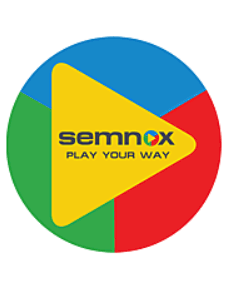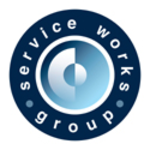Description

Asset Mapping

Parafait
Comprehensive Overview: Asset Mapping vs Parafait
Asset Mapping and Parafait are different solutions catering to distinct aspects of asset management and customer interaction, often utilized by various sectors like entertainment, retail, or facilities management. Here's a breakdown of their primary functions, target markets, market positions, and key differentiators:
Asset Mapping
a) Primary Functions and Target Markets:
- Primary Functions: Asset Mapping is primarily a digital platform that focuses on asset tracking and management. It integrates IoT devices and sensors to provide real-time monitoring and management of physical assets. The system offers features like live mapping of assets, predictive maintenance alerts, and performance analytics.
- Target Markets: It's aimed at sectors like facilities management, manufacturing, real estate, and smart cities, where there is a need for monitoring infrastructure, equipment, or property.
b) Market Share and User Base:
- Market Share: Asset Mapping is part of a niche market targeting industries with significant asset tracking and management needs. While not a mass-market product, it holds a strong position within smart city initiatives and large-scale facility operations.
- User Base: Typically includes facility managers, city planners, and operations managers in industries where asset visibility is crucial.
c) Key Differentiating Factors:
- Integration Capabilities: Known for its ability to integrate with a wide range of IoT devices and systems, offering a seamless user experience.
- Real-time Data Visualization: Provides a comprehensive visual representation of assets in real-time, which is critical for large operations.
- Customization and Scalability: Offers scalability for large deployments, making it suitable for complex infrastructures.
Parafait
a) Primary Functions and Target Markets:
- Primary Functions: Parafait is an integrated solution designed for cashless transactions and customer engagement, typically used in entertainment and amusement venues. It incorporates point-of-sale systems, RFID technology, and loyalty program management to streamline operations and enhance customer experience.
- Target Markets: Targets amusement parks, family entertainment centers, water parks, and other leisure and entertainment venues.
b) Market Share and User Base:
- Market Share: Holds a significant position in the amusement and leisure industry due to its comprehensive feature set tailored to the specific needs of these venues.
- User Base: Primarily entertainment venue operators and managers who require efficient transaction processing and customer experience management.
c) Key Differentiating Factors:
- Cashless System and RFID Integration: A pioneer in providing cashless transaction solutions in the leisure industry with integrated RFID technology for seamless operations.
- Customer Engagement Tools: Strong focus on customer experience and engagement through loyalty programs and personalized interactions.
- Industry Specialization: Tailored specifically for entertainment and leisure environments, addressing unique operational challenges within this sector.
Comparison Summary
- Technology Integration: Asset Mapping excels in IoT and sensor integration for asset management, while Parafait specializes in RFID and cashless payment systems.
- Market Position: Both are leaders in their respective niches but do not compete directly since they serve different markets and operational needs.
- User Experience: Asset Mapping focuses on backend operational efficiency, whereas Parafait aims to enhance front-end customer engagement and transaction efficiency.
- Deployment: Asset Mapping often involves extensive infrastructure integration, while Parafait can be more rapidly deployed at appropriate venues.
Thus, while both Asset Mapping and Parafait provide asset management solutions, they address different types of assets and serve distinct markets with specialized features.
Contact Info

Year founded :
2012
+44 20 7060 6014
Not Available
United Kingdom
http://www.linkedin.com/company/asset-mapping

Year founded :
2008
+91 82442 55888
Not Available
India
Not Available
Feature Similarity Breakdown: Asset Mapping, Parafait
To provide a feature similarity breakdown for Asset Mapping and Parafait, let's examine the core features, user interfaces, and any unique attributes that set them apart. Please note that the overview is based on the general information typically associated with asset management and facility management systems.
a) Core Features in Common
Both Asset Mapping and Parafait are solutions that can overlap in functionality depending on their applications. Generally, they might share the following core features:
-
Real-Time Monitoring: Both platforms likely offer real-time tracking and monitoring of assets or systems, enabling users to ensure everything is functioning as intended.
-
Data Analytics: Analytic capabilities for performance measurement and reporting are common, allowing users to gain insights from collected data.
-
Maintenance Management: Features for scheduling and managing maintenance activities to prevent downtime.
-
Integration Capabilities: Ability to integrate with other software systems and IoT devices to enhance functionality and information sharing.
-
User Management: Providing multi-user capabilities with different access levels or roles for better operation management.
b) User Interface Comparison
The user interface (UI) of each product may vary significantly depending on their design philosophy and intended user base.
-
Asset Mapping: Typically focused on clarity and simplicity, offering dashboards with visual data representation such as maps or graphs that show the status of assets in real-time. The interface may be designed for quick insight into asset locations and conditions on large-scale operations.
-
Parafait: Being a more comprehensive enterprise management solution, it may offer a more extensive interface suite. This might include dashboards focused on customer interaction, sales, and operations, providing numerous modules that can be customized according to business needs.
While both systems might prioritize intuitive design, the complexity and target audience of each could lead to different visual styles and user experiences.
c) Unique Features
Each system could have distinctive features that set it apart:
-
Asset Mapping:
- Geospatial Capabilities: Strong emphasis on visualizing assets on geographic maps, aiding in geographical data interpretation and real-time asset allocation.
- IoT Connectivity: Extensive use of IoT for real-time updates and asset tracking which might not be as prevalent in Parafait.
-
Parafait:
- Revenue Management: Features focusing on revenue tracking and cashless transactions, specifically tailored for the amusement and leisure industry.
- Customer Engagement: Modules for loyalty programs and customer interaction, enhancing user experience beyond pure asset management.
These features highlight how Asset Mapping might cater more towards real-time and location-oriented asset management, while Parafait could be more tailored towards business operations and customer engagement, especially in industries related to recreation and service management.
It’s essential to consult specific product documentation or sales representatives for a detailed comparison and to evaluate the products against specific business needs.
Features

Reporting and Analytics
Asset Identification
Security and Compliance
Integration and Compatibility
Visualization Tools

Payment Processing
Sales and Reporting
Integration Capabilities
Customer Management
Promotion Management
Best Fit Use Cases: Asset Mapping, Parafait
Asset Mapping and Parafait both serve distinct but complementary roles in asset management and operational efficiency, tailored to different types of businesses and scenarios. Here’s a breakdown of their best fit use cases:
Asset Mapping
a) Best Fit for Businesses or Projects:
-
Real Estate and Property Management:
- Asset Mapping is ideal for property managers who need to keep track of physical assets, HVAC systems, lighting, and other facilities across various properties.
-
Manufacturing and Industrial Plants:
- Companies with large-scale manufacturing operations can benefit from real-time tracking of machinery and equipment, ensuring efficient maintenance and minimizing downtime.
-
Smart Cities and Infrastructure Projects:
- Governments and organizations working on smart city initiatives can use Asset Mapping to monitor public infrastructure assets, improving city management and operational efficiencies.
-
Utilities:
- Electricity, water, and gas utilities can employ Asset Mapping to track the location and status of critical infrastructure like pipelines and transformers.
Industry Verticals and Company Sizes:
- Asset Mapping caters to mid to large-sized enterprises with substantial physical assets distributed over wide areas. It is well-suited for industries that prioritize operational visibility and preventive maintenance.
Parafait
b) Preferred Scenarios:
-
Theme Parks and Amusement Centers:
- Parafait is perfect for managing guest experiences in parks and attractions, including ticketing systems, cashless payment solutions, and guest analytics.
-
Family Entertainment Centers (FECs):
- FECs can use Parafait’s integrated solutions for managing games, rides, and customer engagement more effectively.
-
Water Parks and Resorts:
- With Parafait, these venues can streamline entrance management, simplify payment systems and enhance visitor experience through interactive services.
Industry Verticals and Company Sizes:
- Parafait is best suited for small to medium-sized entertainment venues that require integrated solutions for both operations and customer engagement. It fits businesses in hospitality, entertainment, and recreational sectors needing seamless guest management systems.
Key Differences:
- Technology Focus: Asset Mapping primarily focuses on real-time tracking and management of physical assets, while Parafait emphasizes improving customer experiences and operational efficiency in entertainment venues.
- Scalability and Deployment: Asset Mapping is generally used in broader, infrastructure-heavy settings, while Parafait thrives in specific, event-driven environments.
Both tools offer valuable services, but their strengths lie in distinct areas of asset management and operational efficiency, catering to different industry needs and company scales.
Pricing

Pricing Not Available

Pricing Not Available
Metrics History
Metrics History
Comparing undefined across companies
Conclusion & Final Verdict: Asset Mapping vs Parafait
Conclusion and Final Verdict for Asset Mapping vs. Parafait
a) Best Overall Value:
Determining the best overall value between Asset Mapping and Parafait relies heavily on the specific needs and priorities of an organization. Asset Mapping might offer better value for organizations heavily focused on infrastructure and asset management, particularly those needing detailed asset location and condition data. Parafait, however, might be more beneficial for businesses in the amusement and entertainment sectors where customer experience and operational efficiency are prioritized.
b) Pros and Cons:
Asset Mapping:
Pros:
- Offers detailed visualization of asset locations and conditions, which is ideal for asset-intensive industries.
- Enhances decision-making through real-time data on asset health and performance.
- Improves maintenance scheduling and efficiency, potentially reducing downtime and operational costs.
Cons:
- May require integration with existing systems, which can be complex and resource-intensive.
- Initial setup can be cost-prohibitive for smaller businesses with limited budgets.
Parafait:
Pros:
- Specifically tailored for the amusement and entertainment industries, providing seamless customer interactions.
- Integrates point-of-sale, ticketing, and customer management into a single platform, enhancing operational efficiency.
- Supports cashless transactions, which can improve customer satisfaction and throughput.
Cons:
- Limited applicability beyond customer-centric operations, making it less suitable for industries outside its niche.
- May involve a steep learning curve for staff unfamiliar with integrated cashless systems.
c) Specific Recommendations:
For users trying to decide between Asset Mapping and Parafait, the choice should heavily depend on the industry and specific operational needs:
-
Evaluate Your Industry Needs: If your business is in asset management, logistics, or infrastructure, Asset Mapping is likely the more appropriate choice due to its robust asset tracking and management capabilities. For those in entertainment, hospitality, or any customer-centric service with a high volume of transactions, Parafait's integrated system can enhance customer experience and operational efficiency.
-
Consider Future Scalability: Reflect on where your business aims to scale in the future. Asset Mapping might offer superior scalability in managing large volumes of assets. In contrast, Parafait might better suit growing customer bases and facilities in the entertainment sector.
-
Budgetary Considerations: Be realistic about budget constraints and potential ROI. Asset Mapping may require more upfront investment, whereas Parafait offers an immediate impact on customer satisfaction, which could translate to faster ROI in a customer-heavy environment.
Ultimately, the decision between Asset Mapping and Parafait should be driven by a careful analysis of long-term strategic goals, current infrastructure, customer interaction levels, and budgetary considerations.
Add to compare
Add similar companies




